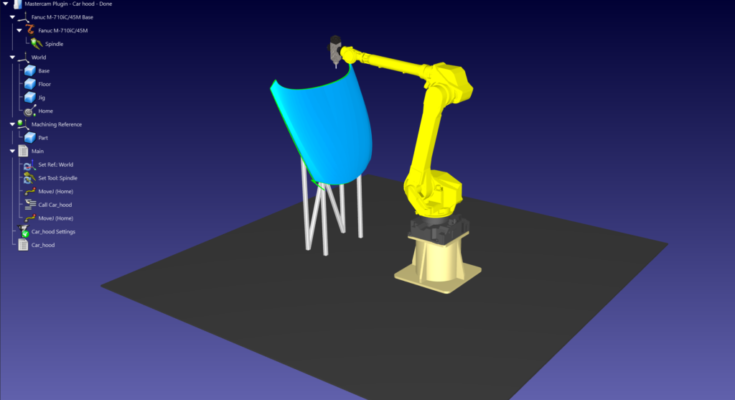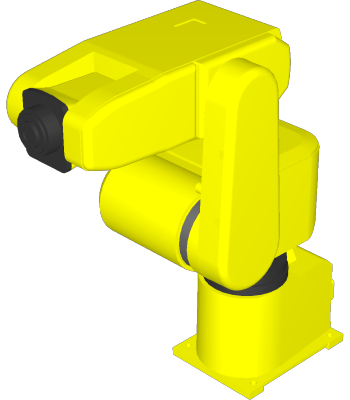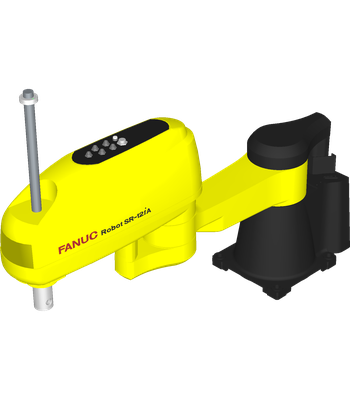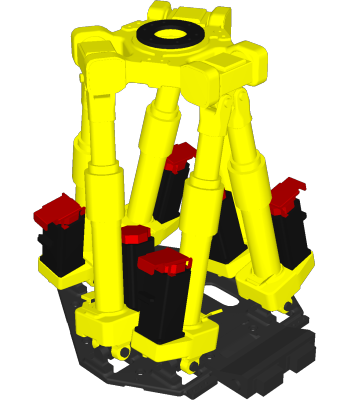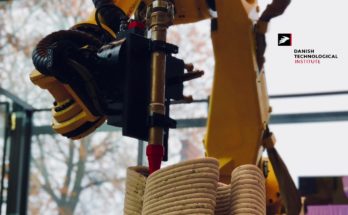When you see a big yellow robot, you can almost be certain it’s a FANUC.
FANUC is one of “The Big 4” robotics companies in the world. Catering to a wide array of industries, these Japanese-made robots are known for their adaptability, power, and ubiquitousness.
The company’s influence is far-reaching, with a notable 15% share of the Chinese industrial robot market. They are dedicated to growing the capabilities of robotic systems, investing in technologies like robotic machine learning and cloud robotics.
In this spotlight on FANUC, we’ll look at how you can program FANUC robots easily for your chosen application.
The FANUC Story: What Sets FANUC Robots Apart
Founded in Japan in 1956 by Dr. Seiuemon Inaba, FANUC has grown to become a global leader in factory automation.
The company started by producing servo motors and computer numerical control (CNC) systems. Throughout his long career, Dr. Inaba receive many honors for his pioneering achievements in creating CNC tools and factory automation.

As one of the few companies in the industry to develop and manufacture all its major components in house, FANUC robots are known for their reliability, predictability, and ease of repair. Customers benefit from lifetime product support for as long as they use their FANUC products in production.
What Industries are FANUC Robots Used In?
FANUC robots are a common sight in many industries, showing the versatility and range of their products.
The automotive manufacturing industry is a notable industry, where FANUC robots help to streamline assembly lines, improve quality control, and increase productivity. It also remains a worldwide leader in automation for CNC control systems, with solutions like its ROBODRILL and ROBOCUT.
Other industries where FANUC robots are common include electronics manufacturing, food manufacturing, and the pharmaceutical industry.
In 2021, FANUC cemented its place as a worldwide leader in robotics when it celebrated the production of its 750,000th robot.

3 Example Applications for KUKA Robots
There are FANUC robots available for almost any almost every application you can think of.
Here are 3 example applications from different industries that people are already achieving with FANUC robots:
1. Complex CNC Machining
With the company’s long history in CNC solutions, it’s unsurprising that FANUC robots are now involved CNC machining.
Robot machining is an ideal application for robots, helping you to machine intricate shapes that would be impossible with conventional CNC tools. With FANUC robots, you can achieve precise tolerances even to the nanometer level.
2. Painting Solutions
FANUC claims to offer the largest selection of painting robots in the robotics industry.
Robot painting is a hazardous task, requiring special explosion-proof robots that can handle the complex task of painting. By using a robot to paint, you can achieve a more consistent paint application, reduce waste, and increase your uptime for painting operations.
3. Laser Cutting
FANUC is pioneering in the industry with their application of laser cutting using robots. These involve using a robot to operate a laser cutting tool.
Models like the versatile six-axis FANUC M-20iB/25 robot and the 0i-LF Plus offer high cutting performance in a simple to use system.
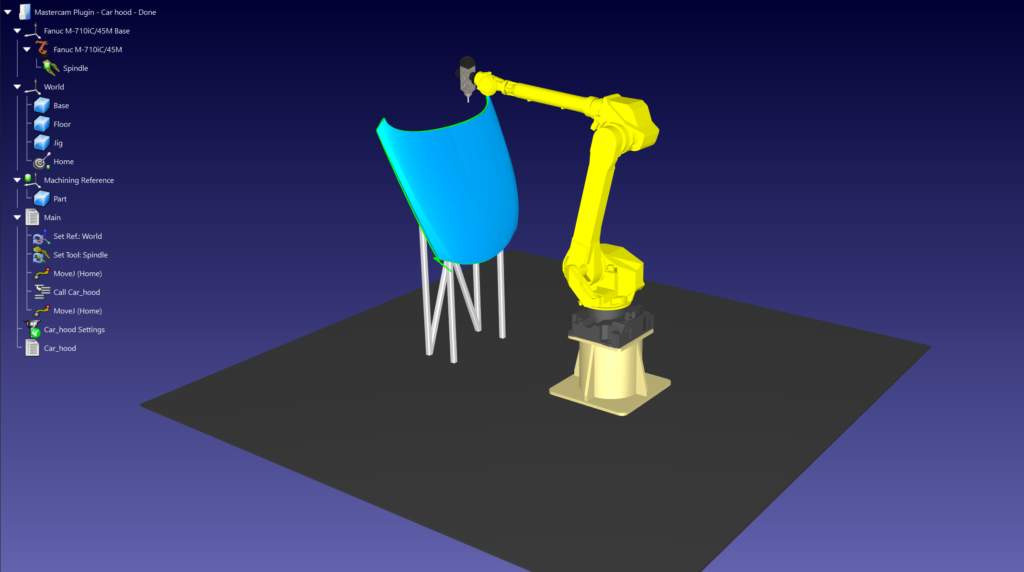
Options for Programming FANUC Robots
Whatever application you choose for your FANUC robot, it’s important to find a method of programming that helps you to deploy the robot easily and efficiently.
There are 3 main options for programming a FANUC robot:
- Brand Programming Langauges: Karel and TP— the primary language for programming is called Karel, a Pascal-derived programming language that requires a high level of robotics expertise. There is also TP, the language that is used in FANUC teach pendants.
- Teach Pendant — Possibly the most common method for programming FANUC robots is to “jog” the robot using the teach pendant. This time-consuming approach involves manually guiding the robot through movements. As well as being complex to program, it also takes a lot of work to make changes.
- RoboDK — For a more intuitive and graphical approach to programming, supported by a powerful API if you need it, you can also program your KUKA robots offline using RoboDK.
With RoboDK, you program FANUC robots even without the physical robot present. You just load your chosen FANUC model from the integrated robot library. This streamlines the programming process and reduces unnecessary downtime.
Spotlight on 3 Models in the RoboDK Library
The RoboDK robot library includes an extensive collection of FANUC robots models.
At the time of writing, it includes over 100 FANUC models of various types, including 5 and 6 DoF arms, Delta, SCARA, and palletizing robots, as well as hexapod robots.
Here are 3 models that you can find in the library:
Robot 1: FANUC LR Mate 100iB
The LR Mate 100iBz is a compact tabletop 5-axis robot that is often used for material handling tasks. It offers a 5 kg payload, 620 mm of reach, and a repeatability of 0.04 mm.
LR Mate robots come in various models, for specific target application areas. This includes food and beverage, clean room, and washproof versions.
Robot 2: FANUC SR-12iA
The SR-12iA is a 4-axis SCARA robot arm used in assembly and material handling applications. It has a 12 kg payload, 900 mm of reach, and repeatability of 0.015 mm.
This model offers high wrist inertia of up to 0.45 kgm2. This makes it particularly suitable for some assembly applications, such as battery and solar panel installations. It also comes in a 20 kg payload version.
Robot 3: Fanuc F-200iB
The F-200iB is a 6 Degrees of Freedom hexapod platform. It can handle payloads of up to 100 kg, offers 437 mm of reach and has a repeatability of 0.1 mm.
This platform is a parallel link robot and is designed for a range of manufacturing and automotive assembly processes.
How to Program FANUC Robots Easily with RoboDK
If you want to streamline the deployment process for your FANUC industrial robot, it’s worth looking at using RoboDK for your programming.
RoboDK’s rich simulation environment makes it easy to quickly design robot programs and test them before you put the robot into production. The intuitive graphical interface allows you to quickly create robust programs while the API allows you to incorporate any advanced features you want.
To get started, download a trial copy of RoboDK from our download page and load up your favorite robot model.
Which FANUC model do you use and for which applications? Join the discussion on LinkedIn, Twitter, Facebook, Instagram, or in the RoboDK Forum.. Also, check out our extensive video collection and subscribe to the RoboDK YouTube Channel

